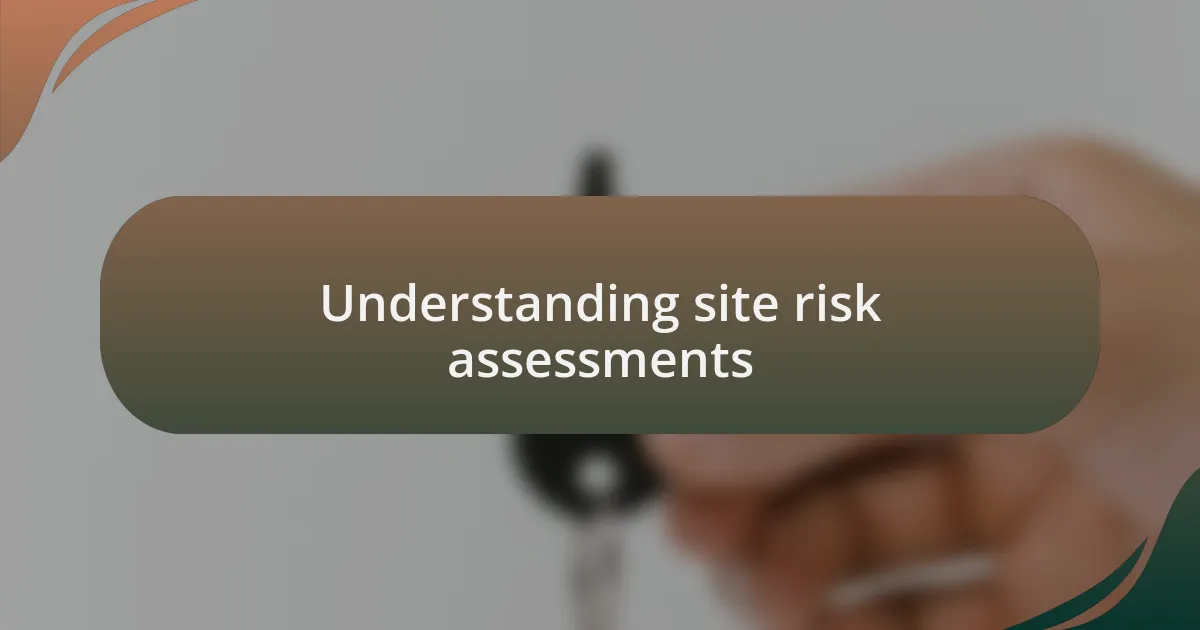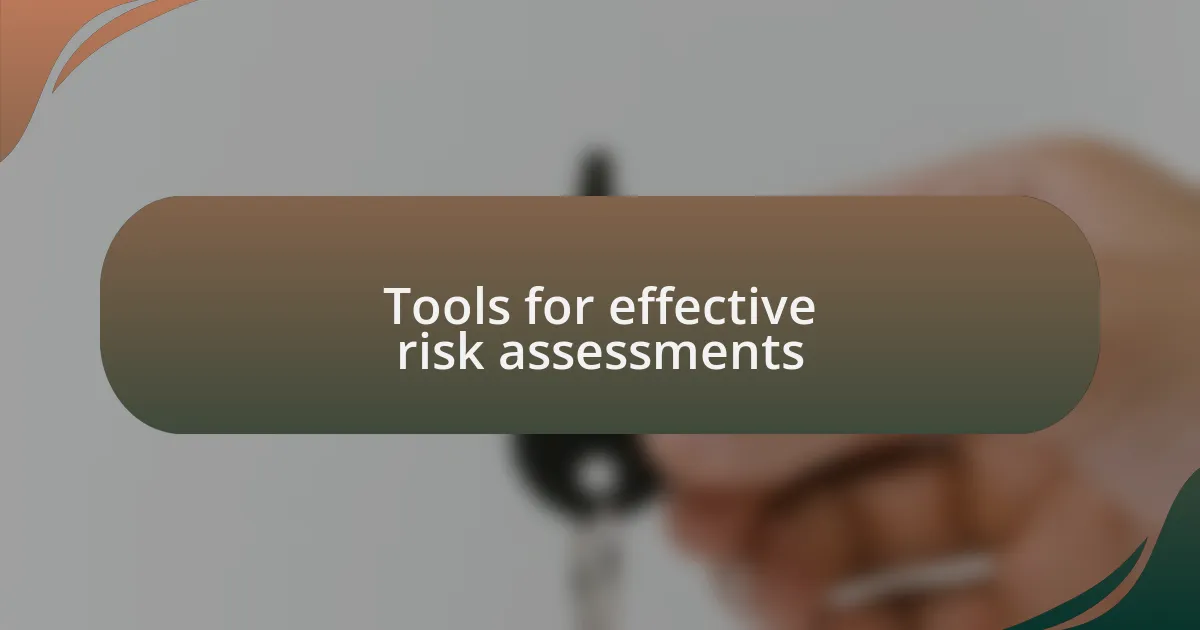Key takeaways:
- Site risk assessments identify unique vulnerabilities and are essential for managing potential threats to a business.
- Engaging team members in the assessment process improves morale and creates a collaborative environment focused on safety.
- Utilizing tools like risk assessment software, surveys, and on-site visits enhances the effectiveness of identifying and addressing risks.
- Listening to employee concerns during assessments can uncover blind spots and improve overall security protocols.

Understanding site risk assessments
Understanding site risk assessments is crucial for identifying vulnerabilities and managing potential threats to a business. When I first started conducting these assessments, I was surprised by how much overlooked detail can significantly impact overall security. Have you ever considered how a seemingly minor environmental factor might lead to a major risk?
As I delved deeper into risk assessments, I realized that they are not just checklists. They are opportunities to uncover the unknown. I still recall a time when analyzing a site led me to discover inadequate lighting in a parking area, which could easily become a hotspot for criminal activity. This experience taught me that every site has unique risks that require tailored solutions.
Moreover, engaging in the process of a site risk assessment can feel intimidating, yet it’s incredibly rewarding. By actively involving team members and discussing their concerns, I noticed a shift in the overall morale and awareness within the organization. It was as if we were all part of a larger mission, uniting our efforts to create a safer environment. Isn’t it comforting to know that a proactive approach can empower not just you, but your entire team?

Importance of site risk assessments
Site risk assessments play a pivotal role in safeguarding a business against potential threats. Early in my career, I witnessed the aftermath of a preventable burglary at a local store, which shook the community. It was a stark reminder that neglecting to assess risks can lead to financial loss and emotional distress, impacting not just the business owner but also the families of employees who count on that income.
When I undertake a risk assessment, I view it as a critical investment in peace of mind. I vividly recall a project where my team identified areas of vulnerability that had remained unaddressed for years. Addressing those risks led to a visible reduction in incidents, and it was gratifying to hear employees express their newfound sense of security. How can one put a price on that feeling of safety and assurance?
Ultimately, the process of conducting site risk assessments fosters a culture of vigilance and preparedness. I once engaged in an exercise where employees shared their safety concerns during an assessment meeting. The insights they provided were eye-opening and highlighted the importance of listening to those who work on the front lines. Isn’t it fascinating how collaborative approaches can reveal blind spots that might otherwise go unnoticed?

Tools for effective risk assessments
When it comes to conducting effective risk assessments, utilizing specific tools can make all the difference. One essential tool I often rely on is risk assessment software. Early on, I adopted a particular program that streamlined the entire process, allowing my team to quickly identify potential threats and document our findings in a structured format. Have you ever found that a single piece of software can transform how you handle a task? For me, that shift was significant.
Surveys and questionnaires are another powerful method in my toolkit. I remember when I distributed an anonymous survey to employees at one location. The responses unveiled several concerns I hadn’t anticipated, which led us to adjust our security protocols. Isn’t it amazing how simple questions can elicit profound insights? Understanding employees’ perspectives often reveals vulnerabilities that might not be visible from a managerial standpoint.
Lastly, site visits remain irreplaceable. I once conducted assessments at various locations, taking detailed notes on the physical environment, lighting, and access points. During one visit, I immediately noticed a poorly lit entrance that staff had grown accustomed to but was undoubtedly a risk factor. Walking through the space firsthand allowed me to connect the dots in a way that digital tools simply couldn’t. Don’t you think there’s something invaluable about seeing a situation up close?